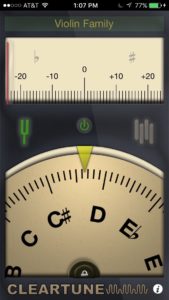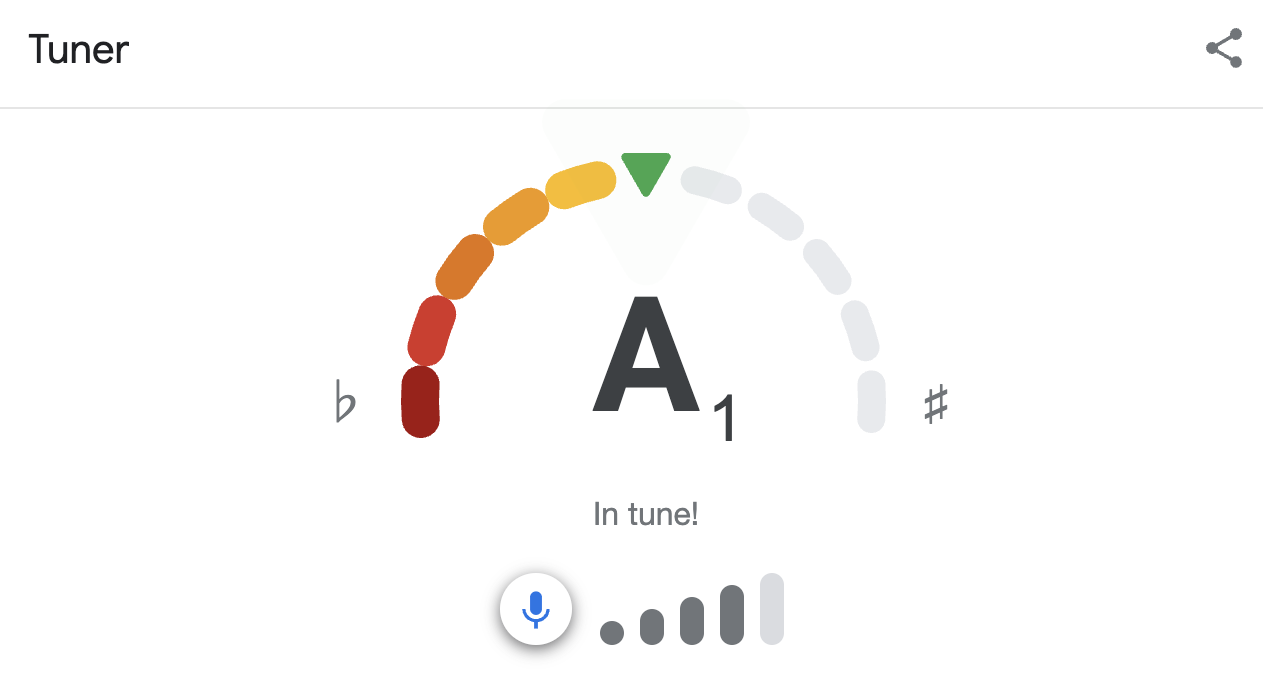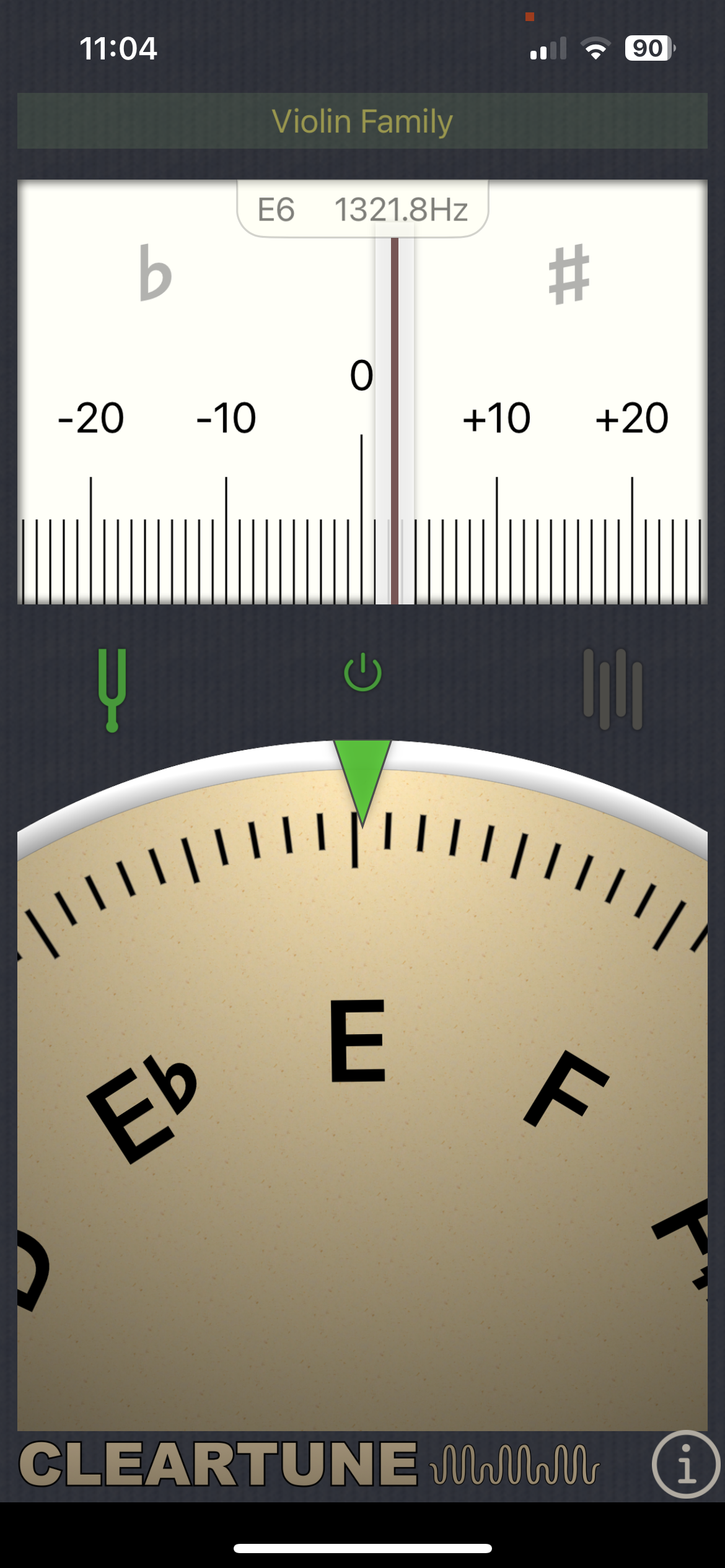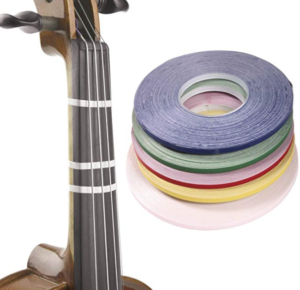How to play better in tune with an electronic tuner
If you’re learning on your own, you might find it challenging to play the left-hand fingers in tune. Drone-tuning™ is the best way to learn and practice this FUNdamental skill. But you might still need some extra help. So let’s turn to digital technology and use an electronic tuner.
Get An Electronic Tuner
The same tuner that you use to tune up the strings can be used to help you find the correct left-hand finger placement.
Either a phone app like Cleartune (what I use). There are lots of other options for this.

Or the free Google Tuner

Or a clip-on tuner like the Snark.
How To Correctly Place The Left-Hand Fingers With An Electronic Tuner
First, make sure your fiddle is in tune using the tuner. Review the lesson on that: Tuning The Fiddle.
Then use the tuner to find each note before you play a song. For example, if you’re playing a beginner song on the D string.
Play D1 (which is called E and is played with the pointer finger) and use the tuner to adjust the position until it’s in tune.

Repeat the process for D2 (which is called F# and is played with the middle finger) and D3 (which is called G and is played with the ring finger)
If you’re starting on a different string, then find the first few notes on that string with the tuner.
In the future, use this strategy to tune up any notes you are struggling with. Once a note is in tune, continue to play it and simply listen to how this in-tune note sounds.
Don’t let the tuner become a crutch
Now here comes a key step: Look away from the tuner. And if you’re using a clip-on tuner, I recommend you turn it off.
You do NOT want to be staring at the tuner while practicing. You want to turn your attention to working out technical problems, listening and making music.
Don’t let the tuner become a crutch. If you have the tuner on while playing scales and tunes you’ll wind up being totally reliant on it (insert frustrated, super-mopey emoji here). If you turn it off, you create a small obstacle to using it so that you can’t just glance over. I think this might be enough to keep you from over-using it.
How often do I do this process
At the beginning of a practice session, spend 3-5 minutes just working on your tuning with an electronic tuner. Play each fingered pitch of a scale for 30 seconds or so.
Then, use this process at key points during a practice session. Before you start to play a song, use the tuner to find the first few notes. Or use it to play the scale for the song.
Alternatively, you can slowly pay a scale up and down using the tuner and adjusting as you go. Do this for 3-5 minutes.
Further practice
Once you find the correct pitches with the left hand, try closing your eyes and playing:
Another tool to help you play in tune is finger tape.
Finger tape on the violin neck is like training wheels on a bike. In short, tape gets you in the ballpark, but it won’t get you perfectly in tune. You need your ears for that! (That’s why I urge you to learn Drone-tuning™ sooner than later.) Learn more here: How to Place Finger Tape
Two ways I can help you level up your fiddling
- Sign up for the FiddleHed newsletter below.
- Sign up for the Free Two-week Trial. You’ll get full access to all courses and group lessons. Plus, I’ll send you some free lessons tailored to your current skill level.
Thanks for being here 🙏
Continue on to When The Saints Go Marching In >>
Return to top of Module 1.2 >>
Return to Fiddle Questions >>
Leave a Reply
You must be logged in to post a comment.



Am enjoying how Module 1.2 is helping me revive my ear-training skills from long ago! Three technical glitches I’ve encountered repeatedly that you might want to check:
1) When using the site in Night Mode, it’s almost impossible to type entries in the Practice Journal because what I type shows up as white on a very pale yellow background (both on my standard Dell PC and on my Samsung Galaxy S20 cell). In Daylight Mode, what I type shows as black on the same pale yellow or white background, so no problem in that Mode.
2) Practice Toolkit seems convenient, but sometimes I can’t get to the “Submit” button after making an entry in my Practice Journal on my laptop (ie, the screen won’t scroll down to bring the Submit button into view).
3) When I leave a comment like this one, the reCaptcha function makes me try three times (ie, I have to “backpage”) before it accepts the comment as “valid” and lets it post. Seems to happen whether I post from my laptop or my cell.
Awesome sharings Pete, your feedback helps us out alot. We will check into these situations you clearly explain.. and good to know you tried it on a couple devices. Thanks for your support and attention.
Great for combating stage fright!
Is there an electronic tuner you recommend? There are a lot out there!
Use either a phone app or the Snark: https://amzn.to/3JjN2YV
Yes! I enjoyed the drone module, will try some more!
Yes, I was looking for the page about playing in tune with the drone and it’s not there! Where is it?? It would be very helpful!
Ugh, I’ve let myself become dependent on my tuner. I love the idea of interval scales with eyes closed, I think that’s going to help a lot!
The link for Lesson: How to Play in Tune with Drone Notes, is an empty page!
Thanks pgross for mentioning. Looks like it got resolved now if you haven’t checked it out yet 🙂